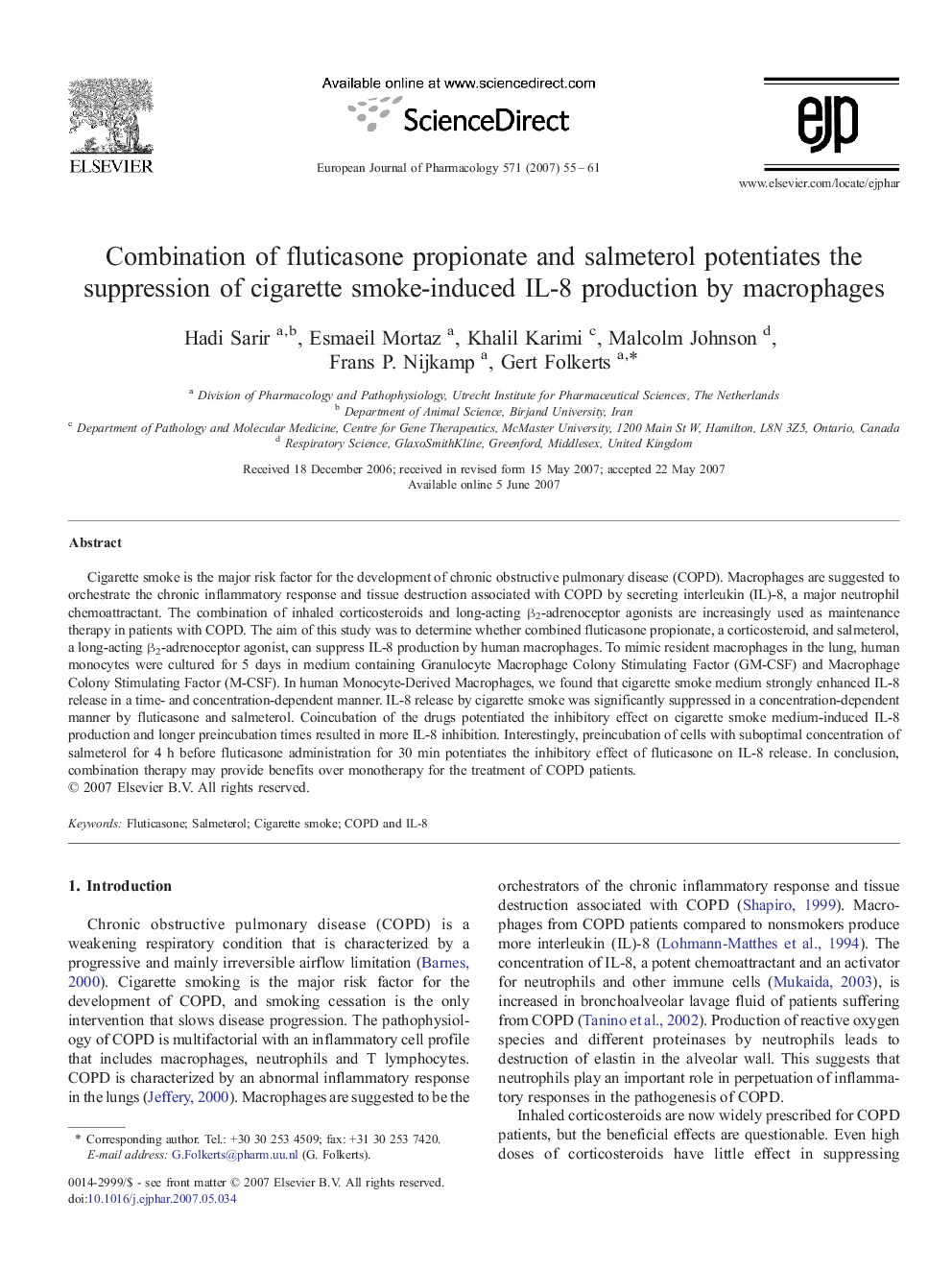| Article ID | Journal | Published Year | Pages | File Type |
|---|---|---|---|---|
| 2535904 | European Journal of Pharmacology | 2007 | 7 Pages |
Cigarette smoke is the major risk factor for the development of chronic obstructive pulmonary disease (COPD). Macrophages are suggested to orchestrate the chronic inflammatory response and tissue destruction associated with COPD by secreting interleukin (IL)-8, a major neutrophil chemoattractant. The combination of inhaled corticosteroids and long-acting β2-adrenoceptor agonists are increasingly used as maintenance therapy in patients with COPD. The aim of this study was to determine whether combined fluticasone propionate, a corticosteroid, and salmeterol, a long-acting β2-adrenoceptor agonist, can suppress IL-8 production by human macrophages. To mimic resident macrophages in the lung, human monocytes were cultured for 5 days in medium containing Granulocyte Macrophage Colony Stimulating Factor (GM-CSF) and Macrophage Colony Stimulating Factor (M-CSF). In human Monocyte-Derived Macrophages, we found that cigarette smoke medium strongly enhanced IL-8 release in a time- and concentration-dependent manner. IL-8 release by cigarette smoke was significantly suppressed in a concentration-dependent manner by fluticasone and salmeterol. Coincubation of the drugs potentiated the inhibitory effect on cigarette smoke medium-induced IL-8 production and longer preincubation times resulted in more IL-8 inhibition. Interestingly, preincubation of cells with suboptimal concentration of salmeterol for 4 h before fluticasone administration for 30 min potentiates the inhibitory effect of fluticasone on IL-8 release. In conclusion, combination therapy may provide benefits over monotherapy for the treatment of COPD patients.
